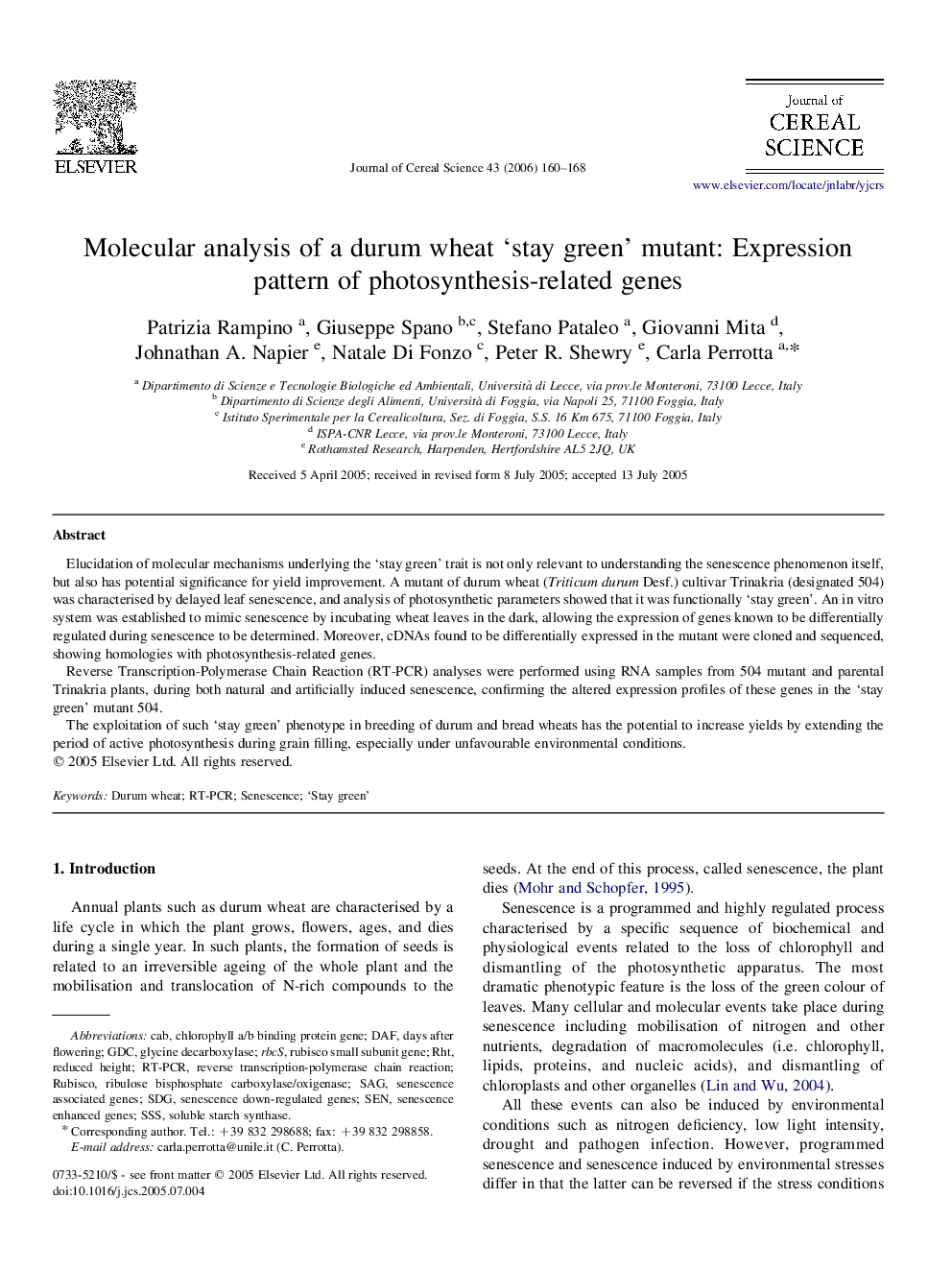| Article ID | Journal | Published Year | Pages | File Type |
|---|---|---|---|---|
| 4516895 | Journal of Cereal Science | 2006 | 9 Pages |
Elucidation of molecular mechanisms underlying the ‘stay green’ trait is not only relevant to understanding the senescence phenomenon itself, but also has potential significance for yield improvement. A mutant of durum wheat (Triticum durum Desf.) cultivar Trinakria (designated 504) was characterised by delayed leaf senescence, and analysis of photosynthetic parameters showed that it was functionally ‘stay green’. An in vitro system was established to mimic senescence by incubating wheat leaves in the dark, allowing the expression of genes known to be differentially regulated during senescence to be determined. Moreover, cDNAs found to be differentially expressed in the mutant were cloned and sequenced, showing homologies with photosynthesis-related genes.Reverse Transcription-Polymerase Chain Reaction (RT-PCR) analyses were performed using RNA samples from 504 mutant and parental Trinakria plants, during both natural and artificially induced senescence, confirming the altered expression profiles of these genes in the ‘stay green’ mutant 504.The exploitation of such ‘stay green’ phenotype in breeding of durum and bread wheats has the potential to increase yields by extending the period of active photosynthesis during grain filling, especially under unfavourable environmental conditions.
